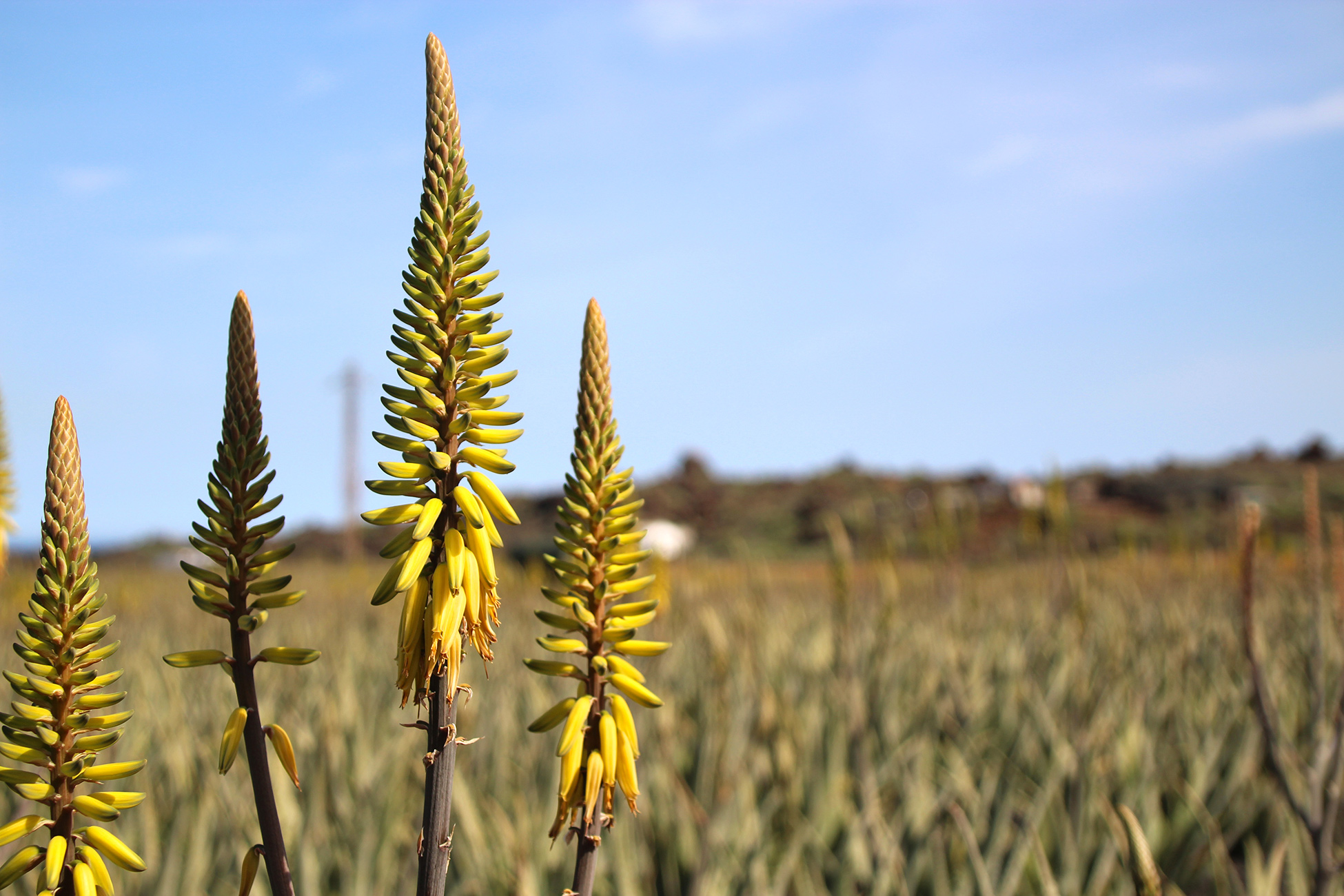Local Storage seems to be disabled in your browser.
For the best experience on our site, be sure to turn on Local Storage in your browser.
Lanzaloe Park, an Oasis for Natural Life

Aloe vera flowers are producers of multiple sugars which attract numerous species of insects, arachnids and molluscs and other animals such as birds. These animals find this source of energy and food in our Lanzaloe Park plantation, an oasis for natural life.
In addition to the named animals, there are many others that live from the primary production of nectar from the Aloe vera plants. Others also find protein-rich food by preying on the herbivores and thus generate a balanced food chain on the plantation, all thanks to the Aloe vera plants and their flower. This once again confirms the ecological importance of our cultivation.
At the moment there is a clear balance, no intervention is needed. While working on agronomic tasks we observe the interaction between these animals and evaluate the levels of damage to the crop, which are extremely low at the moment.
The Aloe vera flowers, even after being harvested and dried, are still useful to the bees that visit the farm, as they are a source of pollen that continues the process of post-harvest anthesis.
Therefore LANZALOE contributes to the worldwide campaign to protect the bees in its Aloe vera plots in full bloom and allowing these useful hymenopters to take advantage of pollen and nectar even from flowers in the process of drying.
Here is a small photo gallery where you can see some of the insects that visit our plantation.
Bee collecting pollen from flowers that have been dried.
Larvae of a local lepidopteran that takes advantage of the floral biomass of Aloe vera plants.
They feed mainly on the tenderest region of the apex of the inflorescence.
Medium painted butterfly: Lepidoptera insect (the adult of the black worm in the above photos).
Little black bee: Small hymenopterous insect.
Honeybee: Medium hymenoptetus insect (Scientific name: Apis mellifera).
Small moth and large moth: Lepidopteran insect in adult stage.
Medium snail: land mollusk.
Small Common Fly: Adult Diptera.
Medium white spider: arachnid.
Small black bumblebee: Hymenophile insect.
Black aphid: Hemipterous insect.
Medium gray spider: arachnid.
Medium green fly: Adult dipteran insect.
There are also different species belonging to the genus Drosophila (too small to be photographed).

